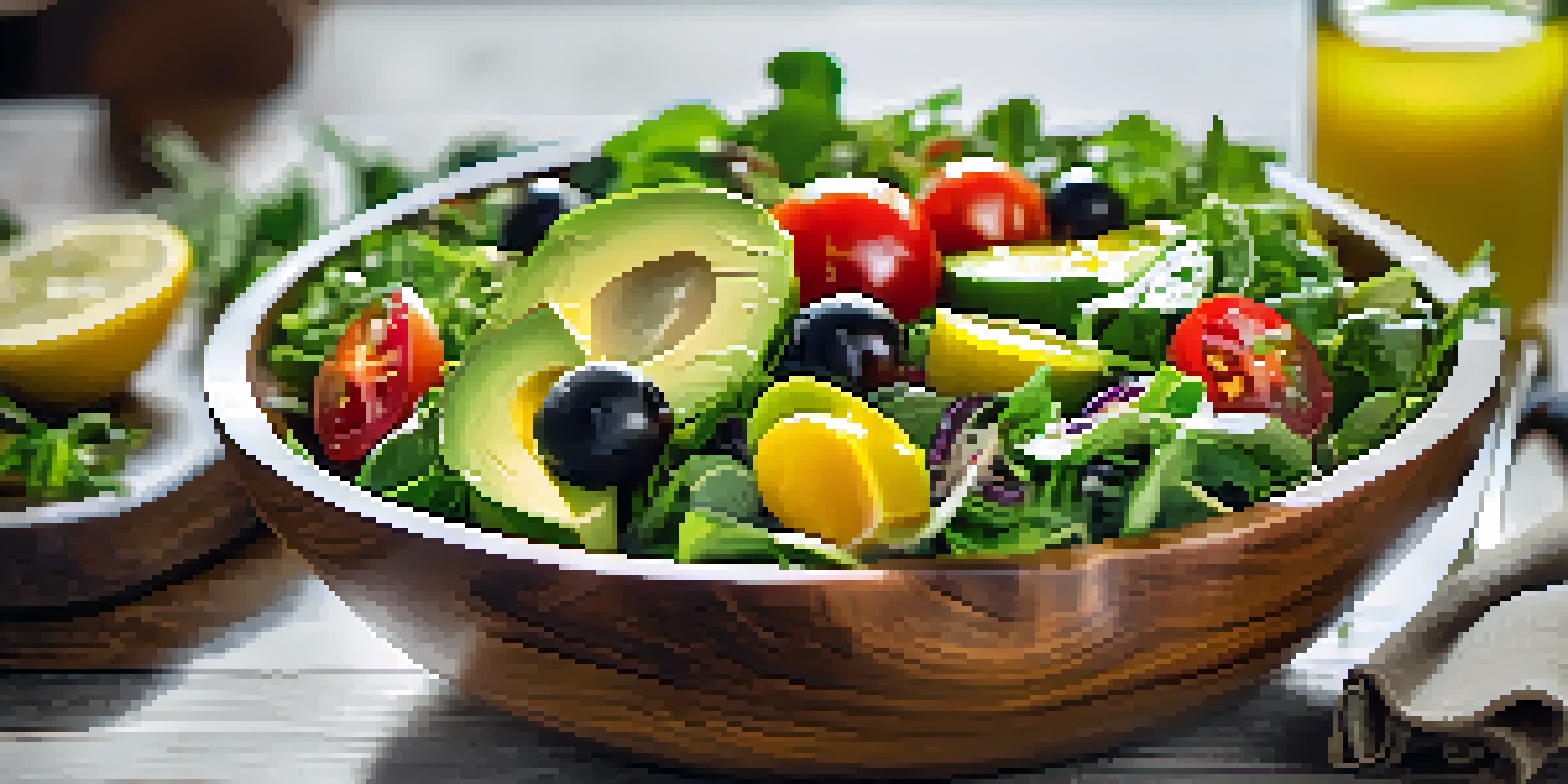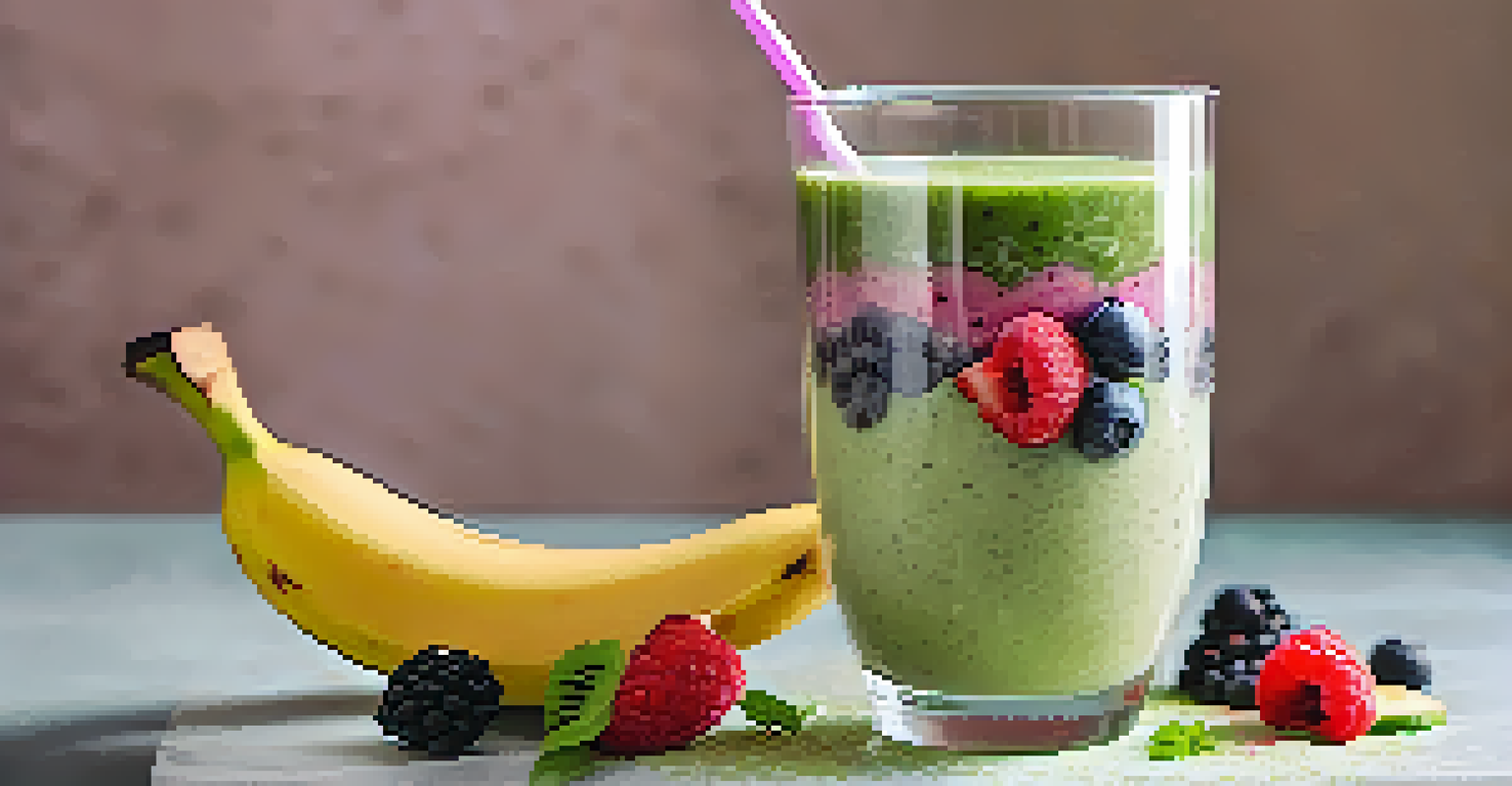Raw Food Preparation Guidelines for Beginners

Understanding the Raw Food Diet Basics
The raw food diet focuses on consuming unprocessed, whole foods that have not been cooked above 118°F. This means fruits, vegetables, nuts, seeds, and sprouted grains are staples. The idea is to preserve the nutrients and enzymes that cooking can destroy, promoting better health and vitality.
Let food be thy medicine and medicine be thy food.
Many proponents of the raw food diet believe it helps with weight loss, boosts energy levels, and improves digestion. For beginners, it can be a refreshing shift from traditional cooking methods, encouraging creativity and experimentation in the kitchen. It's essential to understand the philosophy behind the diet, as this will guide your choices moving forward.
Before diving into raw food preparation, familiarize yourself with the various food groups and their health benefits. For instance, leafy greens are rich in vitamins A, C, and K, while nuts provide healthy fats and protein. Knowing what you’re consuming will help you create balanced meals and snacks.
Essential Tools for Raw Food Preparation
Equipping your kitchen with the right tools can make raw food preparation easier and more enjoyable. A good quality knife, cutting board, blender, and food processor are must-haves. These tools will help you chop, blend, and create textures that enhance your raw dishes.

Additionally, investing in a spiralizer can turn vegetables like zucchini and carrots into fun noodle alternatives, making your meals visually appealing and exciting. A dehydrator is another useful gadget, allowing you to create snacks like raw crackers or dried fruits, adding variety to your diet.
Embrace Fresh, Organic Ingredients
Prioritizing fresh, organic produce enhances the flavor and nutritional value of your raw food meals.
Don't forget about storage containers! Keeping your ingredients fresh is vital in a raw food diet. Glass jars and airtight containers can help you store prepped fruits and veggies, ensuring they stay crisp and ready for your next meal.
Choosing Fresh, Organic Ingredients
When starting a raw food diet, prioritize fresh, organic ingredients. Organic produce is grown without synthetic pesticides and fertilizers, making it a healthier option. Fresh ingredients are not only tastier but also more nutritious, ensuring you get the most out of your meals.
You are what you eat, so don’t be fast, cheap, easy, or fake.
Visiting local farmers' markets can be a fantastic way to find seasonal produce and support your community. Plus, it’s an opportunity to ask farmers about their cultivation practices, which can enhance your understanding of what you're consuming. This connection can make your raw food journey more meaningful.
Always wash your fruits and vegetables thoroughly, even if they are organic. This removes any dirt or potential contaminants. Investing time in selecting and preparing your ingredients sets the foundation for delicious and healthy meals.
Basic Raw Food Recipes to Get Started
Starting with simple raw food recipes can build your confidence in the kitchen. A classic raw salad can include mixed greens, cherry tomatoes, avocado, and a homemade lemon vinaigrette for flavor. Experiment with different dressings to find what you love most.
Another beginner-friendly recipe is a raw smoothie, which can be made by blending fruits like bananas and berries with leafy greens and a splash of almond milk. This is a great way to start your day and can be customized to suit your taste preferences.
Equip Your Kitchen Wisely
Having essential tools like a blender, food processor, and spiralizer makes raw food preparation easier and more enjoyable.
As you become more comfortable, try creating raw energy balls using nuts, seeds, and dried fruits. These quick snacks are not only nutritious but also provide a satisfying boost of energy when needed. The best part? You can easily tailor them to your liking!
Understanding Food Safety in Raw Food Prep
Food safety is crucial when it comes to raw food preparation. Since you're working with uncooked ingredients, it's essential to ensure that everything is clean and fresh. Always wash your hands, utensils, and surfaces before starting to minimize the risk of contamination.
Be mindful of how long you store your raw food creations. Generally, salads and smoothies are best consumed within a day or two, while certain prepared snacks can last longer if stored properly. Keeping an eye on freshness helps you avoid spoilage and maintains the quality of your meals.
Lastly, trust your senses. If something looks or smells off, it's better to err on the side of caution and discard it. Your health is paramount, and understanding food safety will help you enjoy the raw food diet worry-free.
Building a Balanced Raw Food Diet
Creating a balanced raw food diet involves incorporating a variety of foods to ensure you’re getting all the necessary nutrients. Include a mix of fruits, vegetables, nuts, seeds, and sprouted grains in your meals. Each food group contributes different vitamins and minerals essential for your overall health.
Don’t forget about protein! While many people think it’s hard to get enough protein on a raw food diet, options like hemp seeds, chia seeds, and nuts can help. You can also explore sprouted legumes, which are packed with protein and easy to digest.
Stay Motivated in Your Journey
Setting small goals and connecting with a supportive community can help you maintain motivation on your raw food path.
Consider planning your meals ahead of time. This not only saves you time but also ensures you're meeting your nutritional needs. A well-thought-out meal plan can make your transition into raw food much smoother and more enjoyable.
Tips for Staying Motivated on Your Raw Food Journey
Staying motivated on your raw food journey can be challenging, especially in the beginning. One effective strategy is to set small, attainable goals. For example, aim to incorporate one raw meal into your day and gradually increase as you become more comfortable.
Joining a community, whether online or locally, can provide support and inspiration. Sharing recipes, tips, and experiences with others can help keep you engaged and excited about your choices. Plus, learning from fellow raw food enthusiasts can expand your culinary repertoire.

Lastly, be flexible and patient with yourself. Transitioning to a raw food diet is a process, and it’s okay to have setbacks. Celebrate your successes, big or small, and remember that every step you take toward a healthier lifestyle is a victory worth acknowledging.